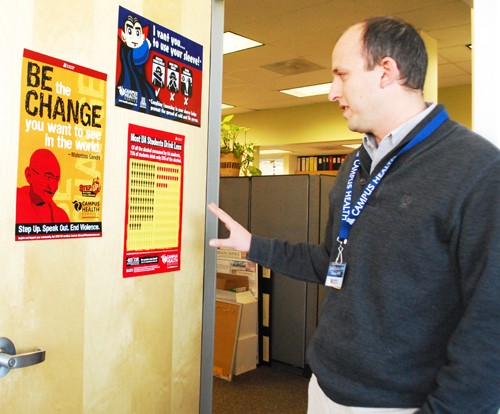Alcohol usage among college students has remained constant for the past several decades, despite national efforts to minimize drinking.
UA student drinking habits are consistent with national averages but may have improved over the last eight years, according to Peggy Glider, coordinator for evaluation and research at Campus Health Service.
Student alcohol use has decreased in all categories addressed by the Campus Health Service Annual Health and Wellness Survey since the survey began in 2002. The anonymous survey is administered annually to a random sample of around 3,000 undergraduate students. The 2010 data shows students consume fewer alcoholic beverages each week and binge drink less frequently than in 2002.
Heavy episodic drinking, commonly known as binge drinking, is defined as consuming five or more drinks in one sitting. Binge drinking rates for colleges nationally have remained between 39 percent and 44 percent since the 1980s, according to Richard Lucey, special assistant to the director in the Center for Mental Health Services for the Substance Abuse and Mental Health Services Administration.
“”It is a constant,”” Lucey said. “”That’s probably one of the greatest frustrations.””
Lucey said student drinking habits are hard to change because American culture enforces drinking as a college rite-of-passage.
“”That’s become what people think happens on college campuses,”” Lucey said.
UA students who reported heavy episodic drinking once within two weeks prior to taking the survey decreased from 44 percent in 2002 to 40 percent in 2010. Those who had engaged in this type of drinking six or more times within the same time frame decreased from 13.5 percent to 7.9 percent.
Campus Health has addressed the campus “”alcohol culture”” with the surveys by using the results in educational campaigns. Glider said students overestimate how much and how often other students drink.
“”Our reputation as a party school I’m sure feeds that misconception as well, especially for incoming students who think that’s the environment they’re entering,”” Glider said.
Lucey said these “”social norm”” campaigns can discourage alcohol abuse on campus.
“”It actually corrects that misperception and drives rates and consequences down even farther,”” he said.
Pre-physiology freshman Taylor Dunphy said she notices the Campus Health posters in her residence hall saying 80 percent of students party one night a week or less.
“”It was a shocker,”” she said.
Dunphy said the posters help students compare their alcohol use to that of their peers.
“”It doesn’t want to make you drink more than them. I would say it might even make you want to drink less,”” Dunphy said.
Campus Health also instituted several programs in recent years to combat excessive drinking. The programs are not abstinence-based, but instead aim to identify students at risk for using alcohol excessively and encourage moderation.
“”Having a drink occasionally is not going to harm a college student,”” Glider said. “”It might be illegal if they’re underage and have legal consequences, but from a public health standpoint, it’s not the biggest risk.””
Campus Health launched Project CHAT in 2005, which changed the medical history form on campus to include questions about alcohol use. Health professionals look at the answers and briefly speak with students about their habits and may refer them to other resources.
“”Most college students have at least one university health visit a year,”” said Ralph Hingson, director of division of epidemiology and prevention research for the National Institute on Alcohol Abuse and Alcoholism. “”This has the potential to have population-wide effects.””
Campus Health also instituted BASICS, or Brief Alcohol Screening and Intervention for College Students, in 2002. Students are referred to or choose to have individual counseling and follow-up about their alcohol use.
Other programs target freshman, who are at risk for experimenting with alcohol. The e-CHUG program began in 2005 and requires first semester students to take an online survey about their alcohol use. The program provides them with health and safety information tailored to their habits.
“”It is kind of a way we can give them feedback on risks right away,”” said David Salafsky, director of health promotion and preventive services for Campus Health Service.
However, not all students find alcohol awareness initiatives helpful.
“”No, I don’t think (e-CHUG) was useful,”” said pre-architecture freshman Johnny Sansone. “”I kind of saw it as a study for the school and not for my own benefit.””
Hingson said lessening alcohol use is possible with comprehensive programs on college campuses.
“”College students have to get consistent messages from all quarters that this behavior is not acceptable.









